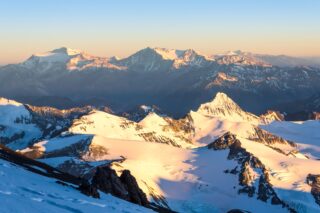
Enduring Argentina

Enduring Argentina
Drawing from our extensive experience in the Andes mountains and delivered through the collaboration of our LHO Team Leader and local IFMGA-certified guides, our safety-focused LHO Aconcagua Expedition is meticulously designed to go above in and beyond in supporting you to achieve this remarkable mountaineering objective. From nutritious food menus to enhanced acclimatization schedules, regular health checks to monitor your progress, and our commitment to providing the best mountain facilities available, we address every aspect of this adventure, allowing you to fully concentrate on your goal.
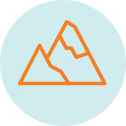
TRIP TYPE
Climbing and Mountaineering

DURATION
20 Days

DESTINATION
Argentina
1
Led by our experienced LHO Team Leaders in close collaboration with our vetted IFMGA-certified mountain guides.
2
Unlike other operators, our price includes the Aconcagua climbing and entry permits.
3
An all-inclusive experience from start to finish that includes incredible photography provided by your LHO Team Leader!
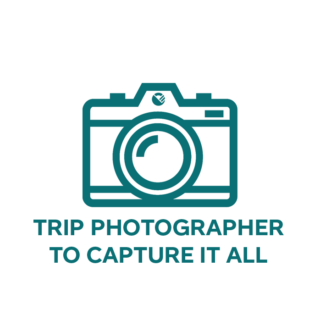
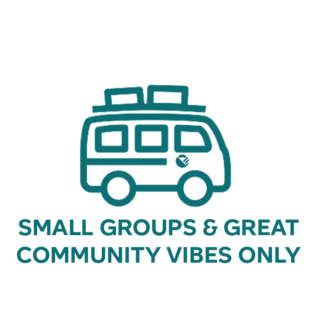
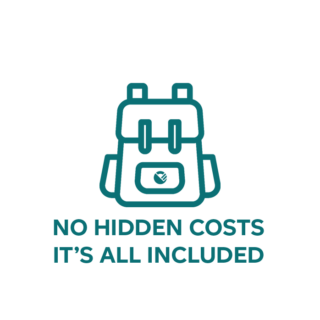
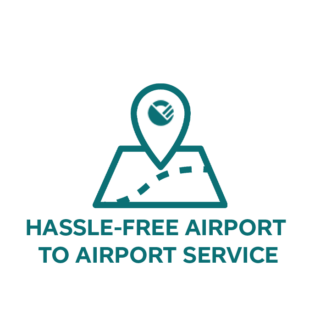
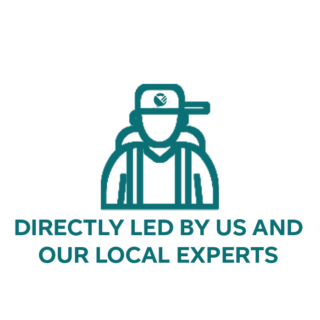

DATE & STATUS
PRICE
TEAM LEADER
AVAILABILITY
WHAT'S INCLUDED IN THIS TRIP
WHAT'S NOT INCLUDED IN THIS TRIP
DAY 1: WELCOME TO MENDOZA
Situated on the eastern slopes of the Andes, Mendoza serves as the gateway to the high Andes and is renowned for its South American wine. You’ll be welcomed at Mendoza Airport by a member of the LHO Team and transported to your hotel in the city center. Your LHO Team Leader will be present at the hotel to assist with check-in, ensure you have everything you need for our upcoming adventure, and provide the day’s plan. If you arrive early, you can explore the city or relax at the hotel pool. Your LHO Team Leader will send you recommendations for places to visit closer to the trip date. Our expedition’s first event is a team dinner hosted by your LHO Team Leader and local lead guide at a local restaurant. Depending on everyone’s arrival times, it may be more convenient to host the dinner at our hotel. Your LHO Team Leader will provide the details upon your arrival. This dinner will be your first opportunity to meet everyone, gain in-depth insights into the adventure ahead, and ask any questions you may have. The first round of drinks is on us! Following this will be a gear check.
DAY 2: OFF TO THE TRAILHEAD PENITENTES – 2,700 M
Max Altitude: 2,700 M
Our first day together primarily involves logistics and paperwork. While your Aconcagua permits are prearranged, the park authorities still require your personal signature at their office before issuing them. After breakfast, we’ll pack our luggage, load it onto our private bus, and head to the Aconcagua Park Office to swiftly collect and sign the permits. Our porter team will meet us there and join us for the journey to the mountain. We’ll also have the opportunity to pick up any last-minute gear rentals or snacks that any of us may need before our three-hour road journey along the wine countryside leads us to Villa Los Penitentes, our accommodation for the night. We’ll have lunch at a local restaurant on the way before reaching our final destination. Our lodge for the evening offers amenities similar to small hotels, including showers. After check-in, your LHO Team Leader will help you prepare your duffle bags, which will be transported early by our Muleteers the following day. Each duffle bag should not weigh more than 30 KGs. Once done, we can relax and enjoy the afternoon, followed by our team dinner and briefing for the next day.
DAY 3: THE SOUTH FACE APPEARS: CONFLUENCIA – 3,390 M
Distance: 8.5 KM | Ascent: 595 M | Descent: 25 M | Max Altitude: 3,390 M
Our third day marks the official start of the trail to the summit of Aconcagua. After breakfast, we’ll board our bus for the ride to Horocones, the park’s entrance. As is customary, we will stop at the park rangers’ office to present our permits upon arrival. We’ll also receive our packed lunches from the team, so be sure to have space in your backpack. After verifying the permits, we’ll begin the first leg of our trek towards Confluencia. Reaching 3,390 M on the first day is no small feat, and your LHO Team Leader and local lead guide will focus on maintaining a sustainable pace throughout the day. You’ll also learn the importance of short, efficient breaks and the detrimental effects of the “stop-start” hiking strategy. “Stop-start” refers to trekkers who push too fast, lose their breath, and then have to stop to recover, which depletes energy and morale and is unsustainable over the long term. Our aim is to maintain a steady and sustainable pace throughout. The trail to Confluencia is mostly dry and moderate, following a sharp valley northward with small sections of steeper elevation gain. The impressive part of this trail is seeing the south face of Aconcagua right from the beginning. The massive glacial wall puts the scale of this challenge into clear perspective. However, when breaking it down into daily objectives, even the seemingly impossible becomes achievable. Our camp at Confluencia sits at the base of the old glacier moraine, where the south face glaciers reached centuries ago. Dinner will be served hot at the camp.
DAY 4: PLAZA FRANCIA – 4,000 M
Distance: 20.9 KM | Ascent: 896 M | Descent: 896 | Max Altitude: 4,000 M
Our second day on the trail is an acclimatization day. We won’t be getting an early start on this day. Rather, we’ll take our time, enjoy breakfast, and slowly start making our way toward the south face of Aconcagua. Since we’ll be spending a second night at the same camp, there’s no need to pack our gear. The trail follows the glacial moraine just outside our camp. A moraine is the earth dug up by the glacier, creating falls of small stones known as scree on either side of a deep valley. As we ascend the trail, we’ll start to notice ice beneath the debris inside the moraine, which marks the start of the glacier that we follow up to Plaza Francia. The beauty of this place is incredible because it offers the closest view of the south face of Aconcagua. The summit is almost visible from this viewpoint, and the next time we’ll see it this closely is when we approach it from the North side on our way to the top. Depending on our pace and trail conditions, we may have a picnic upon arrival at Plaza Francia or have a hot lunch back at the camp. Your LHO Team Leader and local lead guide will inform you closer to the time. After taking advantage of photo opportunities, we’ll return to the camp for an afternoon of relaxation and recovery. The decision to ascend to 4,000 meters and then return to a lower altitude is part of our strategy to acclimate to the challenges of high altitude. By ascending slightly, we stimulate our bodies to produce red blood cells and descending provides an opportunity for rest and energy recovery. Your LHO Team Leader will provide a more detailed briefing on acclimatization and other considerations to limit issues down the line. Dinner will be at our camp.
DAY 5: OUR HOME AWAY FROM HOME: PLAZA DE MULAS – 4,300 M
Distance: 17.6 KM | Ascent: 1064 M | Descent: 111 M | Max Altitude: 4,300 M
We’ll start relatively early from Confluencia on our fifth day together. Your LHO Team Leader will provide detailed instructions on the most efficient way to prepare for departure, emphasizing a unidirectional approach, where you finish each step before moving on to the next. This ensures a smooth process and your LHO Team is available to assist at every step. We’ll depart Confluencia for the last time as we head North. We will avoid the moraine on the southern slopes of Aconcagua, moving in a westerly direction along the Playa Ancha valley floor, which begins a long circle around Aconcagua. Although the trail’s incline is very gradual, it covers the longest horizontal distance of the entire expedition. We’ll stop for lunch around midday at the halfway point of our walk before continuing along the valley until it opens up into a basin surrounded by 5,000-meter summits. Reaching the basin indicates our approach to Plaza de Mulas, our base camp for the remainder of the expedition. The last section of the trail, known as the Cuesta Brava, becomes slightly steeper as we approach the slopes of Aconcagua, Cerro Cuerno, and Cerro Catedral. Upon arriving at the base camp, we will get acquainted with all the facilities and have dinner. After the long walk, most of us will likely want a good night’s rest, so our post-dinner briefing will be limited to what you need to know about our rest day the following day.
DAY 6: CHILLING OUT ABOVE - 4,000 M
Our sixth day is dedicated to rest and relaxation. You’ll receive a morning briefing on the dos and don’ts at the base camp, how to use the shower facilities and toilets, and what you need to consider as your body acclimatizes. Please try to use this day to get as much rest as possible. There is literally nothing on our agenda except lunch and dinner.
DAY 7: MT. BONETE, OUR FIRST SUMMIT – 5,000 M
Distance: 7.7 KM | Ascent: 741 M | Descent: 741 M | Max Altitude: 5,000 M
We’ll get an early start to climb to an impressive 5,000 meters and return to Plaza de Mulas. After breakfast, we’ll depart our camp with our packed lunches and enough water for the day, heading west away from Aconcagua. The impressive Cerro Cuerno glacier will be on our right side as we ascend a small mountain refuge used by the national park rangers. From there, we’ll follow a steep mountain trail up the valley until it connects with two big switchbacks that crisscross the east face of Mount Bonete. The final section can feel quite challenging as our bodies break through the altitude threshold and enter the 5,000-meter environment for the very first time. The wind here can be quite sustained. After taking pictures, we’ll descend to a location more shielded from the elements to enjoy our packed lunches before continuing our descent all the way to Plaza de Mulas. This is a full day of trekking, and we don’t expect to arrive at the base camp until shortly before dinner. Thankfully, we’ll have the following day to recover and regain our energy for the days to come.
DAY 8: CHILLING OUT TAKE 2
This will be a second strategic rest day designed to give us the best possible chance to ready ourselves for the summit push. Although we aim to follow this schedule closely, it’s common for these days to be swapped due to weather or other considerations. Your LHO Team Leader and local lead guide will make decisions regarding the itinerary’s manipulation based on the progress of the expedition and local mountain conditions for the safety and benefit of the entire team.
DAY 9: TOUCH AND GO: PLAZA CANADA - 5,050 M
Distance: 4.7 KM | Ascent: 673 | Descent: 673 | Max Altitude: 5,050 M
Our second rotation to higher altitude will take us toward Aconcagua’s summit. The day’s goal is to reach Plaza Canada, one of the support camps we will use later in the week for our summit bid. We will also use this rotation as an opportunity to drop off supplies for our next visit to the camp. Your LHO Team Leader and local lead guide will provide extensive guidance on what to take with you for this trek. We’ll get an early start after breakfast. Although the trail is at a similar altitude to our previous climb of Cerro Bonete, the horizontal distance is much shorter, making today’s climb steeper. The trail begins quite directly before following a series of switchbacks designed to reduce the impact of the steeper sections. We’ll be flanked by sharp rocks and small cliffs on the northwest slopes. Plaza Canada sits on top of one of those rocky cliffs. The trail initially traverses alongside the rocky section before topping out on the plateau immediately to the left of the camp. We’ll eat our packed lunches at the camp, followed by opportunities to relax and enjoy the view before retracing our steps on the descent back to Plaza de Mulas. Dinner will be served at the camp, followed by a debriefing of our climb and a briefing for the following day.
DAY 10: CHILLING OUT TAKE 3
This will be a third strategic rest day to prepare ourselves for the summit push. Keep in mind that our schedule may change depending on conditions. Your Team Leader and local lead guide will provide the most up-to-date information.
DAY 11: THE SUMMIT BID BEGINS
Distance: 2.4 KM | Ascent: 673 M | Descent: 0 M | Max Altitude: 5,050 M
This will be our last departure from Plaza de Mulas before our summit push. Your LHO Team Leader and local lead guide will brief you extensively on what to pack, how to distribute your items between your backpack and your duffle bag, as well as provide a broader overview of the next few days. This expedition includes up to 10 kg of porter carriage per person until the last camp before the summit. Lunch boxes will be provided for our trek to Plaza Canada, which follows the same trail we previously used during our acclimatization rotation. Upon arriving at the camp, we’ll prepare our sleeping arrangements, secure the supplies for the higher camps with our local team, and then have dinner. After each dinner, your LHO Team Leader and local lead guide will provide a detailed briefing of the trail and the challenges for the following day. We recommend getting a good night’s rest.
DAY 12: THE SUMMITS SHRINK: NIDO DE CONDORES – 5,550 M
Distance: 2 KM | Ascent: 673 M | Descent: 2 M | Max Altitude: 5,550 M
After breakfast, we’ll pack up our campsite and continue our ascent towards the northern slopes of Aconcagua. Every step in the direction of Nido de Condores takes us higher than anywhere we’ve been previously on this expedition. The most challenging part of the trail is the initial exit from the camp toward the pass just above. The trail is made up of a rocky scree with several switchbacks cutting across it. Once at the top of the scree, the trail traverses gradually northward toward the plateau of Nido de Condores. It’s very possible to find snow on the trail here. The views also start to give the impression that we are moving into a new phase of this expedition, as the previously towering summits begin to look smaller, and the views open up to the wider expanse of the many summits dotting the horizon. Depending on our pace, lunch may either be a picnic or a hot meal at the camp. Regardless, given the relatively short distance, we are likely to reach the camp either by lunchtime or shortly thereafter. By now, we’ll be comfortable with what happens when we arrive at the camp. We’ll set ourselves up for the night and try to get as much rest as possible before the dinner and briefing.
DAY 13: ACCLIMATIZATION DAY AT NIDO DE CONDORES
This day is earmarked as our last rest day before the summit push. Depending on conditions and the team’s energy levels, we may choose to ascend to a slightly higher altitude and return to the camp to stretch our legs a bit. This is not absolutely necessary, and we may choose to just rest at the camp. Your LHO Team Leader and local lead guide will let you know what time lunch and dinner will be.
DAY 14: ONWARDS TO PLAZA COLERA 5,970 M
Distance: 1.6 KM | Ascent: 411 M | Descent: 0 M | Max Altitude: 5,970 M
After two weeks on the trail, today is the day we finally arrive at the final camp before the summit. Situated on the north ridge directly beneath the summit is Plaza Colera. It serves as the highest camp before our final push to the top. After breakfast, we’ll pack up our camp and begin the ascent, following a continued northern traverse until we reach the visible shoulder that marks the division between the north and east sides of the mountain. As we approach the shoulder, the trail becomes steeper and merges onto several switchbacks that eventually reach the rocky ridge that goes all the way to the summit. We’ll follow the ridge for a short while until we reach a camp known as Berlin. This is typically where we stop to have our packed lunches, weather permitting. From there, it’s a relatively short crossing of a mild basin to reach the camp on the other side. Upon arrival, we’ll set up our tents and try to immediately get some rest. Your LHO Team Leader and local lead guide will let you know what time dinner is. Our dinner at this camp is extremely important, as it provides the summit fuel needed for the final push to the roof of the Americas. At dinner, you will receive a full briefing of the summit push from the team before we turn in for the night.
DAY 15: SUMMIT, SUMMIT, SUMMIT - 6,961 M
Distance: 5.5 KM | Ascent: 904 M | Descent: 904 M | Max Altitude: 6,961 M
Starting early is very important on our summit day. The most dangerous element here is the wind, which typically picks up in the afternoon. Therefore, it is crucial that we return to the safety of our tents before that happens. We typically depart from the camp after a light breakfast at 5:00 am. This schedule may change depending on conditions and the overall pace of the team. Our first checkpoint along the trail is the Independence Refuge at 6,380 meters. The trail to the refuge follows the ridge and winds its way between the rocks as it ascends directly toward the summit. Typically, we experience the warmth of the first sunlight to hit the mountain around this point, providing a much-needed energy boost as we slowly make our way up. From there, we’ll traverse the Portezuelo del Viento, a famous wind couloir that can be demanding even when there isn’t much wind elsewhere on the mountain. The final major push is called the La Canaleta. This is a 300-meter ascending corridor that forms the only technically demanding section of this route to the summit of Aconcagua. The top of the corridor is the summit ridge, directly above the southern face wall of the mountain that we had previously seen from Plaza Francia almost 10 days earlier! We are literally standing above one of the highest faces on Earth! From there, it’s a very short trek, albeit usually in challenging wind, to the summit of Aconcagua at 6,962 meters. A 360-degree panorama awaits, offering plenty of opportunities for taking pictures and celebrating. As much as we’d like to spend the whole afternoon here, we are still exposed to the elements, and the descent is always more demanding than the ascent. Once we’ve spent a reasonable time on the top, we’ll begin our direct descent from the summit But, the summit is only half of the expedition. We’ll head back in the same direction we came, descending first through La Canaleta before reconnecting to the switchbacks and making our way down to Plaza Colera.
DAY 16: RESERVE DAY 1
This additional day is included to maximize our chances of reaching the summit in the event that the weather window does not allow it on our intended day. If we are able to summit, we’ll spend these additional days at base camp to rest and enjoy the mountain.
DAY 17: RESERVE DAY 2
To maximize our chances of reaching the summit in the event that the weather window does not allow it on our intended day. If we are able to summit, we’ll spend these additional days at base camp to rest and enjoy the mountain.
DAY 18: RETURNING TO PLAZA DE MULAS- 5,550 M
Distance: 5.7 KM | Ascent: 1 M | Descent: 1606
After breakfast, we’ll pack up our tents and make our way directly to Plaza de Mulas. The descending trail will feel easier now that we’ve had a full night’s rest and are acclimatized to nearly 7,000 meters. However, it is important to concentrate and keep morale high. Our muscle fatigue can easily cause a misstep or a sprained ankle. We’ll pause at Plaza Canada for a picnic lunch before descending all the way to Plaza de Mulas, where a celebratory dinner reception awaits. Our night will be spent at the Base Camp.
DAY 19: BACK TO MENDOZA
Distance: 27.5 KM | Ascent: 142 M | Descent: 1728 M
We’ll get an early start after breakfast from Plaza de Mulas. This will be the last time we pack up our tents and head out onto the trail. We’ll follow the descending trail back into the valley in the southbound direction towards Confluencia. We’ll pause for lunch upon arriving at the camp before continuing our descent all the way to Penitentes. Although descending the trail can feel rapid, it is still a full trekking day, and we’ll be expected to perform as we have up until the summit in order to exit the park safely and in good time. Once we reach the park gate, we’ll go through a rapid check-out procedure before boarding our private bus and heading to our hotel in Mendoza. Showers await! After checking in and changing into clean clothes, we’ll head out for a farewell dinner hosted by your LHO Team Leader and local lead guide. The last round of drinks is on us!
DAY 20: ADIOS!
Our last day together will be dedicated to airport shuttles. Breakfast is included on this day. Please make sure to provide us with the correct departure times when filling out your Team Details Form. If your itinerary has changed, please inform your LHO Team Leader as soon as possible so that arrangements can be made in good time.

OUR COMMITMENT
We are dedicated to ensuring that everyone involved in our services receives a fair living wage in their respective countries. We invest in our team members, fostering upward mobility within the adventure travel industry, expanding educational opportunities, and offering support wherever we can. By joining an LHO adventure you are directly impacting the incredible people and the remote communities that make these life-changing experiences possible.
LEARN MORE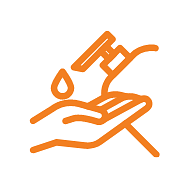
HEALTH & SAFETY GUIDELINES
We do our best to ensure your wellbeing on LHO adventures. That's why the facilities we use throughout our trips are required to meet our health and safety standards. We also follow the laws and protocols of every country that hosts our adventures. This extends to national regulations requiring Covid-19 testing, vaccination certificates, mask wearing or any other local guidelines that may apply. Contact us for the most up to date protocols related to your destination.
LEARN MOREWill there be training on how to use crampons and other technical gear?
We include training for first-time mountaineers that includes crampons, ice axe and rope skills.
We include training for first-time mountaineers that includes crampons, ice axe and rope skills.
What is the temperature like?
It will fluctuate dramatically from highs of 30 degrees Celsius on the lower altitude portions of the expedition to lows of -15 at higher altitude.
It will fluctuate dramatically from highs of 30 degrees Celsius on the lower altitude portions of the expedition to lows of -15 at higher altitude.
Is this suitable as a first mountain to attempt?
No. We do not recommend this experience for first-timers. If you'd like to get started with a roadmap to the Aconcagua, reach out to us and we'll help guide you to making this experience possible in the very near future.
No. We do not recommend this experience for first-timers. If you'd like to get started with a roadmap to the Aconcagua, reach out to us and we'll help guide you to making this experience possible in the very near future.
How do you manage altitude sickness?
It's all about proper acclimatization. That means giving our bodies the time needed to get used to being at high altitude. Our itinerary is designed to do just that with a good balance of altitude exposure balanced with low altitude rest.
It's all about proper acclimatization. That means giving our bodies the time needed to get used to being at high altitude. Our itinerary is designed to do just that with a good balance of altitude exposure balanced with low altitude rest.
SIGN UP TO OUR NEWSLETTER
PAYMENT PLANS AVAILABLE
£6,500
SIGN UP TO OUR NEWSLETTER
INQUIRE NOW
This adventure is only available as a private trip and is customized to your requirements, experience and skill level. To get started, please fill out the form below. We’ll be in touch soon to put it together for you.
"(Required)" indicates required fields
CONTACT US
We’re passionate about guiding you to epic adventures and beyond. If you have any questions at all, don’t hesitate to reach out. We’d love to hear from you.

